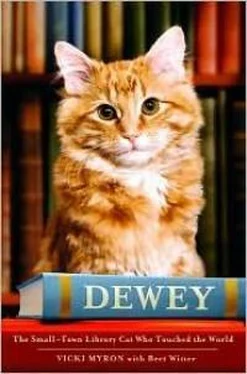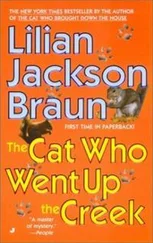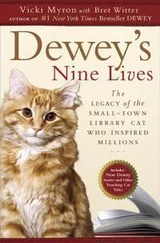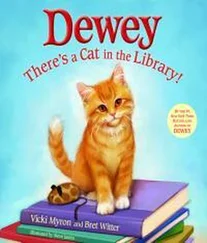“No, but do you really want the job?”
“You have no idea how much I want this job.”
Life is a journey. After all I’d been through, it was inconceivable this wasn’t my next step, or that I wasn’t the best person for the job. I was older than past directors. I had a daughter. I wasn’t going to take an opportunity lightly.
“This is my place,” I told the board. “There’s nowhere else I want be.”
The next day they offered me the position.
I wasn’t qualified. That’s not an opinion, it’s a fact. I was smart, experienced, and hardworking, but the job required a master’s degree in library science and I didn’t have one. The board was willing to overlook this fact as long as I started a master’s program within two years. That seemed more than fair, so I accepted the offer.
Then I found out the nearest American Library Association–accredited master’s program was five hours away in Iowa City. I was a single mother. I had a full-time job. That wasn’t going to work.
Today you can earn an accredited master’s degree in library science on the Internet. But in 1987 I couldn’t even find a long-distance learning program. And believe me, I looked. Finally, at the urging of my regional administrator, John Houlahan, Emporia State University in Emporia, Kansas, took the plunge. The first American Library Association-–accredited long-distance master’s program in the nation met in Sioux City, Iowa, in the fall of 1988. And I was the first student in the door.
I loved the classes. This wasn’t cataloging and checking out books. This was demographics; psychology; budgeting and business analysis; the methodology of information processing. We learned community relations. We spent twelve grueling weeks on community analysis, which is the art of figuring out what patrons want. On the surface, community analysis is easy. In Spencer, for instance, we didn’t carry books on snow skiing, but we always had the latest information on fishing and boating because the lakes were only twenty minutes away.
A good librarian, though, digs deeper. What does your community value? Where has it been? How and why has it changed? And most important, where is it going? A good librarian develops a filter in the back of her brain to catch and process information. Farm crisis in full swing? Don’t just stock up on résumé builders and career manuals; purchase books on engine repair and other cost-saving measures. Hospital hiring nurses? Update the medical manuals and partner with the local community college to help them utilize your resources. More women working outside the home? Start a second Story Hour in the evening and concentrate on day-care centers during the day.
The material was complex, the homework brutal. All the students were working librarians, and there were several other single mothers. This program wasn’t a casual decision; it was a last chance, and we were willing to work for it. In addition to attending class from five thirty on Friday to noon on Sunday—after a two-hour drive to Sioux City, no less—we were researching and writing two papers a week, sometimes more. I didn’t have a typewriter at home, much less a computer, so I would leave work at five, cook dinner for myself and Jodi, then head back to the library and work until midnight or later.
At the same time I threw myself into the library remodeling. I wanted to complete it by the summer of 1989, and I had months of work to do before we could even begin. I learned space planning, section organization, disability compliance. I chose colors, mapped furniture arrangements, and decided whether there was enough money for new tables and chairs (there wasn’t, so we refurbished the old ones). Jean Hollis Clark and I made exact scale models of the old library and the new library to display on the circulation desk. It wasn’t enough to plan a great remodel; the public had to be enthusiastic and informed. Dewey helped out by sleeping every day inside one of the models.
Once a design was determined, I moved on to the next step: planning how to move more than 30,000 objects out of the building, then put them all back into their correct places. I found warehouse space. I found moving equipment. I organized and scheduled volunteers. And every plan, every penny, had to be tallied and earmarked and justified to the library board.
The hours at work and in class were wearing me down, physically and mentally, and the school fees were straining my budget. So I could hardly believe it when the city council started an employee education fund. If city employees went back to school to enhance their job performance, the town would pay for it. Donna Fisher, the city clerk, received a well-deserved degree. When I mentioned my master’s program at a city council meeting, the reception wasn’t as accommodating.
Cleber Meyer, our new mayor, was sitting opposite me at the end of the table. Cleber was the epitome of a Sister’s Café power broker, a blue-collar, salt-of-the-earth type. He had only an eighth-grade education, but he had a loud voice, broad shoulders, and his finger on the pulse of Spencer. Cleber owned and operated a gas station, Meyer Service Station, but you could tell from his huge rough hands that he grew up on the farms. In fact, he grew up outside Moneta; he and Dad had known each other all their lives. And yes, Cleber was his real name. His brother’s name, if you can believe it, was Cletus.
For all his bluster, Cleber Meyer was the finest man you will ever meet. He would lend you the shirt off his back (gas stains included), and I don’t believe he had it in him to hurt anyone. He meant well, and he always had the best interest of Spencer at heart. But he was a good ole boy, he was opinionated, and let’s just say he could be gruff. When I mentioned my master’s program, Cleber slammed his fist on the table and thundered, “Who do you think you are? A city employee?”
David Scott, a local attorney and council member, cornered me a few days later and said he’d go to bat for my expenses. After all, I was a city employee.
“Don’t bother,” I told him. “It will only hurt the library.” I had no intention of undoing all the goodwill Dewey had begun to foster.
Instead, I worked harder. More hours on schoolwork: writing, researching, studying. More work on the remodeling project: planning, researching, budgeting. More work running the day-to-day operations of the library. All of which meant, unfortunately, less time with my daughter. One Sunday Val’s phone call caught me just as I was leaving Sioux City.
“Hi, Vicki. I hate to tell you this, but last night . . .”
“What happened? Where’s Jodi?”
“Jodi’s fine. But your house . . .”
“Yes?”
“Look, Vicki, Jodi had a party for a few friends and, well, it got a little out of control.” She paused. “Just imagine the worst for the next two hours, and you’ll be happy with what you find.”
The house was a wreck. Jodi and her friends had spent the morning cleaning, but there were still stains on the carpet . . . and ceiling. The vanity door in the bathroom was ripped off its hinges. The kids threw all my records against the wall and broke them. Someone put beer cans down the heating vents. My pills were gone. A depressed kid had locked himself in the bathroom and tried to overdose—on estrogen. I found out later the police were called twice, but since the football team was at the party and since it was a winning season, they looked the other way. The mess didn’t bother me, not really, but it reminded me once again that Jodi was growing up without me. The only thing I couldn’t whip with more work, I realized, was my relationship with my daughter.
Ironically it was Cleber Meyer who put it all in perspective. He was pumping gas for me at his station one day—yes, he was the mayor, but it was a part-time position—when the subject of Jodi came up. “Don’t worry,” he told me. “When they turn fifteen, you become the dumbest person in the world. But when they turn twenty-two, you get smart again.”
Читать дальше












